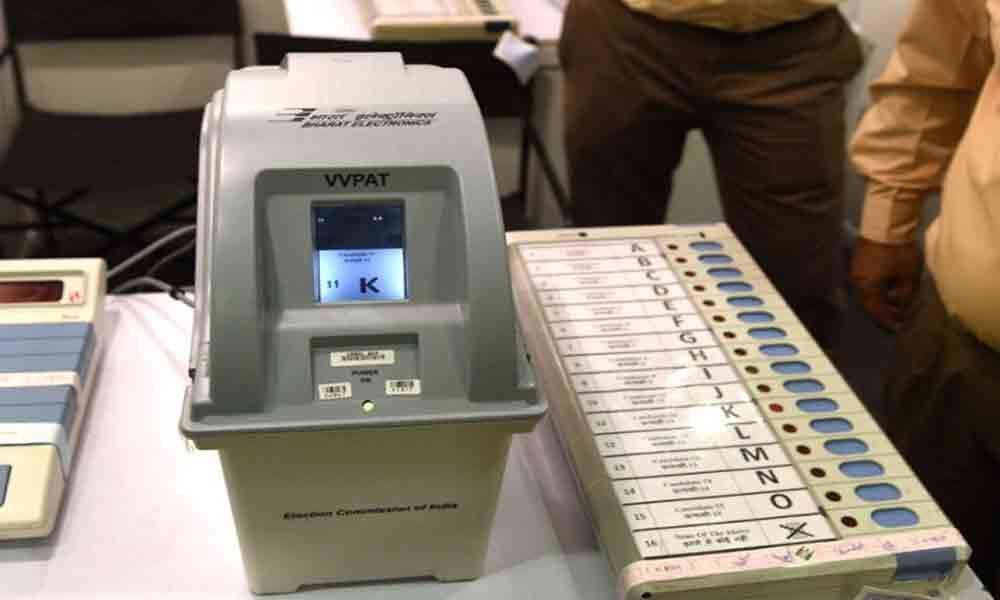Live
- Menstrual Care: A Pillar of Empowerment
- Mangaluru Police Nab Habitual Offender in Ullal
- BUDA Commissioner and Member Arrested
- Elon Musk Becomes the Richest Person in History with $334.3 Billion Net Worth
- The importance of regular mental health screenings for seniors: Emphasizing early detection and intervention
- Voters Reject Dynastic Politics in Karnataka: Raja Mannar
- How Many Almonds Are Too Many? Ideal Daily Intake Explained
- Sony LIV's Freedom at Midnight received a thumbs up from author Tushar Gandhi, great-grandson of Mahatma Gandhi
- Fraud Awareness Week: LinkedIn shares tips and tools to safeguard job-search experience
- Hyundai Motor India Foundation inaugurates Gurugram's first ever Traffic Engineering Centre under its Easy Roads initiative
Just In

On May 23, the seven-week long Indian election process will come to an end. The votes will be counted and a winner will be declared. No matter who...
On May 23, the seven-week long Indian election process will come to an end. The votes will be counted and a winner will be declared. No matter who wins, the real winner will be Indias democracy. I say this as an Indian American who has had the privilege of living in the two largest - and, I would add, greatest - democracies in the world.
I have watched in awe as this years election in India has unfolded. It brought back memories of Indias national election of 2014. The scope and size of that election was unrivalled in the history of the world.
There were 815 million eligible Indian voters at that election. The registration for that election was more than 100 million voters higher than the 2009 election - an increase of almost 15 per cent. The election process required approximately 1.1 million government workers and 5.5 million employees to help voters at 1.4 million voting machines in 9,30,00 polling stations. The voter turnout of over 66 per cent was the highest in the history of India's national elections.
The inspiring thing about that voter registration and turnout is that the government worked diligently to make it happen. In the lead-up to that election, the Election Commission implemented a national initiative called Systematic Voters Education and Electoral Participation (SVEEP). According to H.S. Brahma, in the run-up to the election, SVEEP did work "on a massive scale to educate voters, especially the vulnerable ones - illiterate, poor, marginalized - as well as women and youth."
Fast forward to this year's elections. There are approximately 900 million eligible voters. And, it is reported, that there are at least 11 million poll workers and 2.3 million electronic voting machines.
And, once again, India is doing everything it can to ensure that all voters who desire to vote can do so regardless of their literacy level of location.
In an article for the Washington Post, Niha Masih highlights that for the first time India's voting machines have a candidate's photo as well as the party symbol. India's seven national parties and sixty-four state parties have their own fixed symbols. The Election Commission has a pool of "free" symbols" that can be used by the thousands of other, smaller party organizations across the country.
Another article tells the wonderful true story of a team of election workers who traveled 300 miles over mountainous roads and shaky bridges for a period of four days to set up a polling booth for one voter. This tale says it all about the desire of India to enfranchise its voters.
Its focus is to expand the voting pool and to increase participation. That stands in stark contrast to the emphasis in the United States in recent national election cycles which has been to attempt to restrict and/or reduce participation.
According to New York University's Brennan Center for Justice, since the 2010 elections, 25 states have put new restrictions in place to make it harder to vote; 14 of those states had new voting restrictions during the 2016 presidential election contest between Donald Trump and Hillary Clinton.
This comparison shows that India's election process empowers voters. As Ornit Shani, a scholar at the University of Haifa, Israel, that approach can be traced back to the founding of the country. In her book, How India Became Democratic: Citizenship and Making the Universal Franchise details how India was established at the outset as a country empowering its diverse population as voters.
In his recent article for Foreign Affairs, Ruchir Sharma cites that diversity as a strength observing that "India's diversity is also a source of political resilience, as strong subnational identities provide a check on ethnic and religious nationalism." He ends that article by asserting, "At a time when democracy is said to be in retreat around the world it is still thriving in India."
It makes me even more proud that India with its elections is teaching a lesson in democracy from which the U.S. and the world can learn. That lesson is that enhancing and enabling citizen participation in the political and electoral process makes a democracy more vital and vibrant.
I say thank you for that lesson and for making May 23 a day to celebrate the Indian democracy. It is not perfect - far from it. But India's democracy shines as a beacon of light in a world that is becoming increasingly darker. India has the potential to become a champion of democracy around the globe. If it realizes that potential it will bring about a new dawn for democracy in the 21st century.
-Frank F. Islam
(Frank F Islam is an Indian-American civic and thought leader based in Washington DC. The views expressed are personal)

© 2024 Hyderabad Media House Limited/The Hans India. All rights reserved. Powered by hocalwire.com







